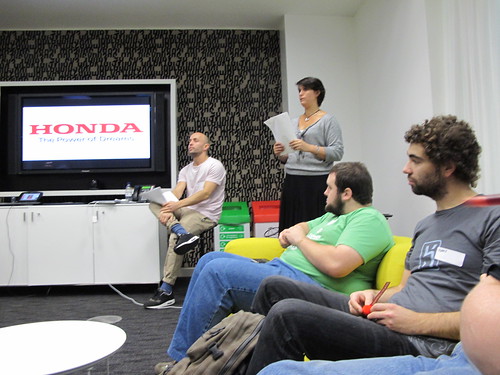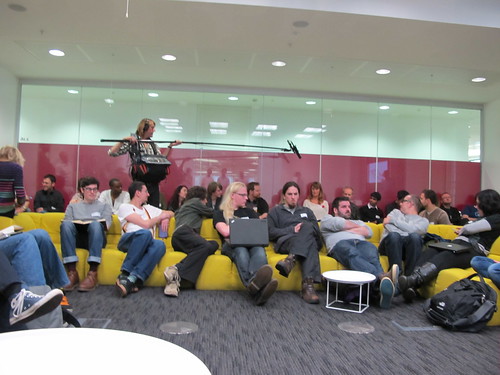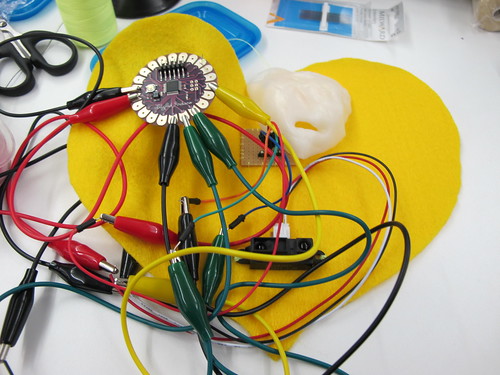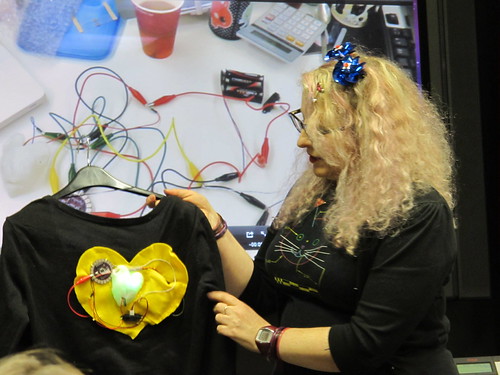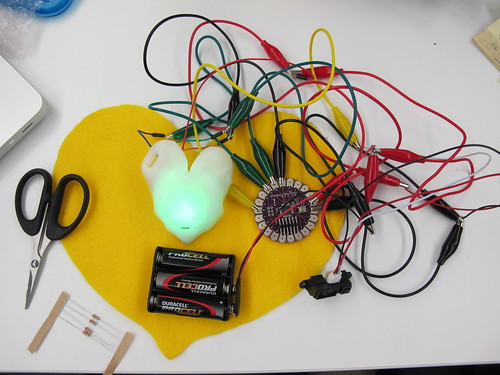
A button on Barbie Photo Fashion's belt is pressed to take a picture that appears on her shirt, which can then be downloaded to a computer.
By STEPHANIE CLIFFORD
Published: February 25, 2012
Generation after generation, Monopoly money stacked up in piles of pink, green and gold, Hot Wheels raced across floors and Barbie was, well, just a doll.
Earl Wilson/The New York Times
On the digital version of the Game of Life, a tablet makes the old plastic spinner's sound.
Not anymore.
Classic toys are becoming much less classic because of upgrades meant to entertain technology-obsessed children. Where they once tried, unsuccessfully, to compete with digital devices, toy makers are co-opting them.
Monopoly money can now be counted by a tablet computer. Hot Wheels cars can zoom across iPad screens. And Barbie? She’s become a digital camera.
“We know that kids are going to play with technology, with iPhones and iPads and Android devices,” said Chuck Scothon, senior vice president for marketing for Mattel’s North America division. “Our job is to not necessarily avoid that, but if you can’t fix it, feature it.”
The souped-up classics reflect the growing reality that children, like their parents, are loath to spend time without their devices. More than a third of children 8 years old and younger use mobile devices like iPads or smartphones, arecent study from Common Sense Media found, and about a quarter of children ages 5 to 8 multitask with their digital devices most or some of the time.
While toy makers have tried to modernize their products for years, this is the industry’s most aggressive integration of tech.
The upgrades are also a direct response to the toy industry’s funk. Retailers are desperate for something new, and most toy makers had a disappointing 2011. In the fourth quarter, when toy companies make most of their sales for the year, sales at the two biggest companies, Hasbro and Mattel, fell by 2 percent domestically (Hasbro’s figures include Canadian revenue).
And the main item retailers could not seem to keep in stock last year was a tablet computer for children, the LeapFrog LeapPad Explorer.
“Kids like to play with the gadgets that they see their parents using, so I think it makes sense for toy makers to find a way to freshen up,” said John Alteio, director of toys and games for Amazon, which will carry several of the tech-enhanced toys.
Mr. Scothon said Mattel has studied how children spend time on various activities, including digital devices, and found that a lot of playtime was revolving around the gadgets.
So Mattel’s new Barbie has a lens in her back; children point the doll at an image, and press a button on Barbie’s belt to take a photo. The image then appears on the front of Barbie’s T-shirt. The photos can also be downloaded to a computer.
“The future of play is trending towards a seamless integration between a physical toy and digital add-ons,” said Laura Phillips, senior vice president for toys and seasonal merchandise at Walmart, in an e-mail. “This innovation is extremely important to keeping kids engaged and keeping toys more relevant.”
Toys like spy glasses and laser tag sets have been transformed. Now, because of the addition of technology that records daytime and night vision video, the spy glasses made by Jakks Pacific, called Spy Net Multi Vision Goggles, could actually perform serious surveillance. And Hasbro’s Laser Tag of yore, when children ran around and pointed toy guns at one another, has been replaced by children pointing iPhones instead. Players place the iPhone in a gun, and the iPhone display — via an app — shows live video of whatever is ahead overlaid with graphics. When the trigger is pulled, lasers appear.
Mattel is introducing a line of games called Apptivity for classic brands, including Hot Wheels, Fisher-Price and Barbie. Using free apps, children pull up a game on the iPad. But instead of using a virtual car or avatar, children move small plastic toys with sensors around the iPad.
The makeovers have extended to tech versions of board games, too. In Game of Life, the plastic spinner has been replaced by a tablet, which shows a picture of the spinner and makes the spinner’s sound. In Monopoly, a tablet or smartphone counts everyone’s money and, when a player lands on Chance or Community Chest, it starts a short digital game, replacing the cards that told people to go to jail, go directly to jail.
“While parents might want certain things, kids enjoy their mobile devices,” said Hasbro’s chief marketing officer, John Frascotti. “This allows parents not to have that confrontation with kids.”
Gadgets that make the link between the virtual and the actual world can be helpful to children, said Sandra L. Calvert, director of the Children’s Digital Media Center at Georgetown. Though children need time away from devices, “any kind of link that you can be drawing between different environments, and seeing that they’re somehow linked together, is useful,” she said.
However, given that the digitally linked games are more expensive (the Barbie with a camera, for instance, is $50, more than twice as much as a plain Barbie) and that many require expensive iPads or smartphones to work, analysts say their potential is limited.
“IPhones and iPads, while extremely popular, are still very limited in real numbers — they’re expensive, they’re adult products, and yes, kids take them and use them, but you have to ask yourself just how far they will go,” Lutz Muller, a toy analyst for Klosters Trading, said. The Common Sense study found that low-income families were unlikely to have downloaded apps for their children’s toys, for instance, which many of the new toys require.
While real-world toys are adding a virtual aspect, some companies are taking the opposite tack. Moshi Monsters, which started out as an online-only game, started selling plush toysshaped like monsters late last year.
“We don’t want a world where kids are just staring at a screen for their play constantly,” said Michael Acton Smith, chief executive of Mind Candy, which makes the toys.







